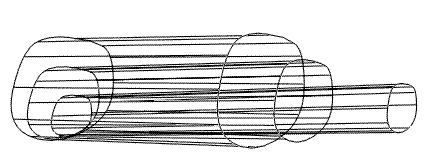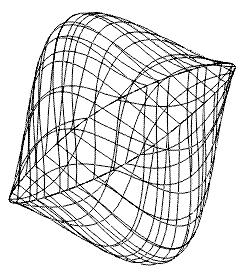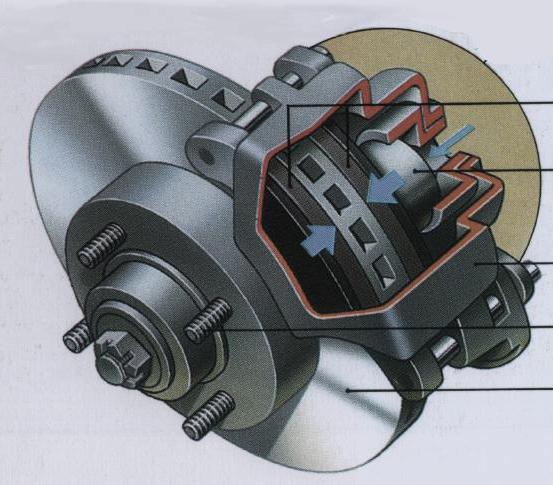

 |
| Figure 1.1: An few examples of a NURBS-based model displayed in wireframe. The large number of isolines makes distinguishing key features difficult. |


 |
| Figure 1.1: An few examples of a NURBS-based model displayed in wireframe. The large number of isolines makes distinguishing key features difficult. |

|
 |
| Hand-tuned Phong-rendered image of mechanical part by Dr. Sam Drake. It took him approximately six hours to hand tune this image. | Illustration of a mechanical part using lines to separate parts and shading to convey material properties. Courtesy Macmillan Reference USA, a Simon \& Schuster Macmillan Company~\cite{macm95}. |
| Figure 1.2: Hand-tuned Phong-shaded image versus technical illustration. | |
In this thesis I explore technical illustrations for a NURBS-based modeling system. A driving force for exploring technical illustration comes from viewing the wireframe representation of complex NURBS-based models, usually a mess of lines, as shown in Figure 1.1. More motivation for exploring illustration techniques is provided by comparing the two mechanical part images in Figure 1.2. The first image is a hand-tuned, computer generated, Phong-shaded part, which took about six hours for Professor Sam Drake to complete. The second image is an illustration from the book The Way Science Works by Macmillian [28]. The illustration uses lines to separate parts and shading to convey material properties. I would like to be able to automatically generate images with many of the characteristics of the illustration in Figure 1.2(b) for NURBS-based models.
Examining technical manuals, illustrated textbooks, and encyclopedias reveals shading and line illustration conventions which are quite different than traditional computer graphics conventions. The use of these artistic conventions produces technical illustrations, a subset of non-photorealistic rendering. In order to create illustration rules for technical illustration, I reviewed several books, e.g., [28,25], and concluded that in addition to using color to differentiate parts [40], technical illustrators use black lines, as well as a specific type of shading which rarely includes shadows. These two-dimensional (2D) line illustration conventions can be imitated by drawing lines consisting of silhouettes, surface boundaries, and discontinuities. Adding shading completes the image and can be used to convey important nongeometric qualities of an object such as material properties.
Line, shading, and lighting techniques used by illustrators can convey a more accurate representation of shape and material properties of mechanical parts than traditional computer graphics methods. These illustration techniques can improve or replace traditional representation of models such as wireframe or Phong-shaded. In Chapter 2, I review what has been done in computer graphics as well as some of the research on human recognition in perception studies. In Chapter 3, I describe the illustration conventions used for lines and shading. In Chapter 4, I discuss algorithms to imitate lines and shading of technical illustration. I will also discuss how these may or may not change for three-dimensional (3D) interactive illustrations. In Chapter 5, I will discuss the implementation details for 3D illustration, and in Chapter 6 I will draw some conclusions and propose some future research goals.